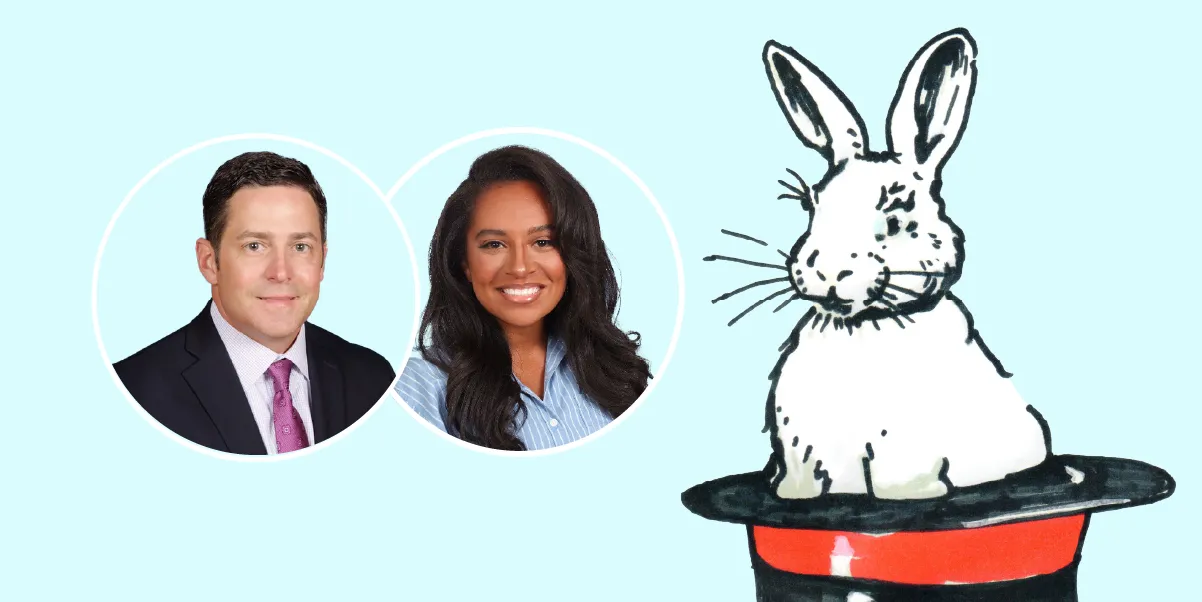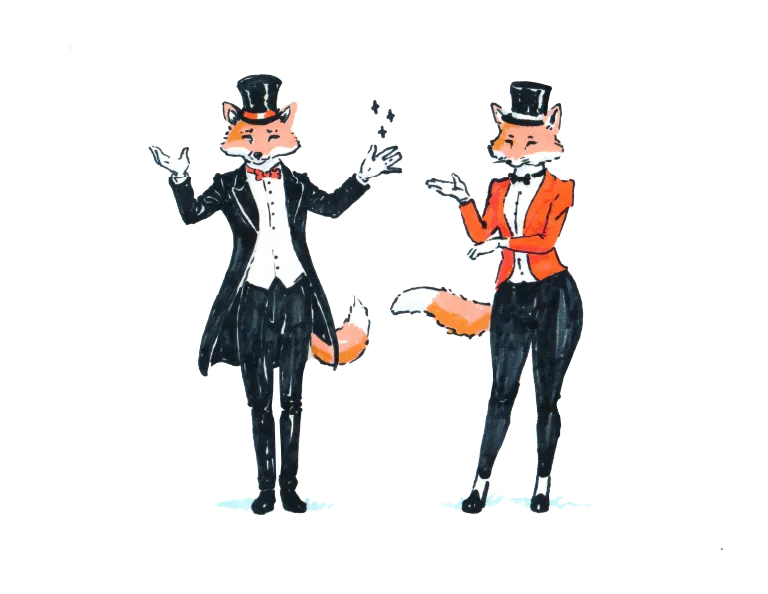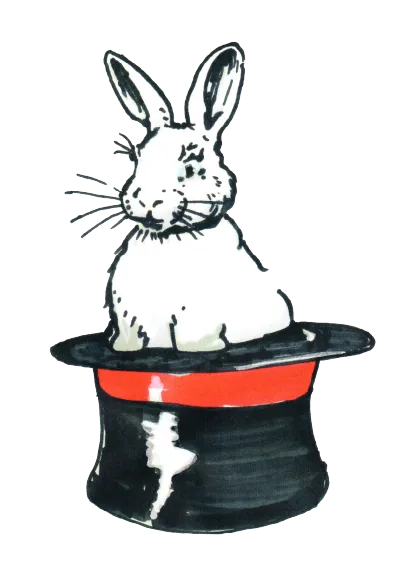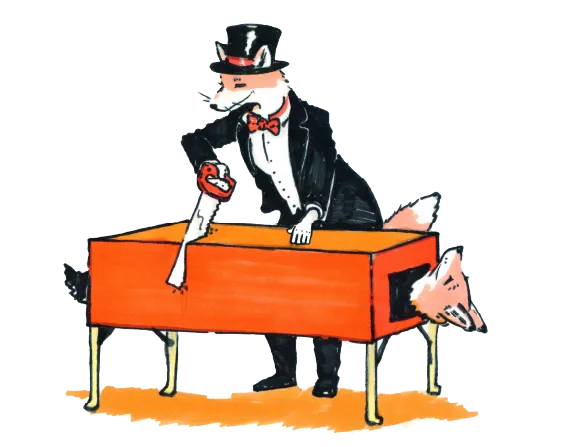Q&A: Working Together
Superintendent Dr. Pete Hannigan and Comms Specialist Samantha Cook share strategies for working collaboratively.


Working Together
One Shenanigan at a Time
A Q&A with Superintendent
Dr. Pete Hannigan and
Communications Specialist
Samantha Cook
In another installment of Hawthorn District 73’s popular video series, “Dr. Hannigan’s Shenanigans,” Superintendent Dr. Pete Hannigan holds an old-school box microphone up to a student. “Are you excited for kindergarten?” Hannigan asks. “I’m not in kindergarten. I’m in first grade!” the student laughs into the mic.

Dr. Pete Hannigan and Samantha Cook
“Dr. Hannigan’s Shenanigans” is just one way the Illinois district shares their story with the broader community. Only a few years ago, though, Hawthorn 73 didn’t have any communications personnel at all. They were also experiencing a good amount of negativity on social media. Now, they have a full-time school communicator and consider their social accounts to be places of positivity. So how’d they do it? It’s thanks in no small part to the teamwork of Hannigan and the district’s communications specialist, Samantha Cook.
Hannigan has been a school administrator for 20 years, while Cook is a young millennial professional. It would be easy to assume that working across such a generational gap would be difficult—but that hasn’t been the case. In fact, it’s their differing perspectives and skill sets that have helped Cook and Hannigan work together as a team. In just the last two years, the district has gone from reactive communications to proactive engagement, successfully regaining control of the district’s narrative and sharing positive stories day after day.
Let’s start with “Dr. Hannigan’s Shenanigans.” Where did that idea come from?
Hannigan: Back before “Hannigan’s Shenanigans” existed, I’d go to classrooms and engage with the kids, ask them questions—just get to know them. Then, when I would come back to the district office, everyone would ask, What did you see at Townline? What did you see at the dual language school? At first, I would just tell them stories, but then we had the idea to start filming my interactions with the kids.
My whole life people have said, Pete’s up to shenanigans—so once we had the idea, I suggested “Dr. Hannigan’s Shenanigans.” That’s how we got the name. Then it started snowballing. When we hired Samantha, she was able to take the concept and really bring it to life.
Cook: What’s been really cool about working with Pete is that he’ll just come up with these random ideas. I don’t always know how to feel about them or execute them at first, but then they turn into something awesome.
With “Hannigan’s Shenanigans,” I was a little nervous. Pete really is unfiltered and very direct—so I wasn’t sure how that would work with the kiddos. But he just went with it, and it worked. I’m very fortunate to have a superintendent who’s willing to put himself out there, and not just in the classrooms. Pete’s willing to be visible on social media, which can be a scary, nasty place sometimes.
Hannigan: One of the things I’ve learned is that we need to tell our story. We weren’t telling the Hawthorn story before. I always talk about how we’ve got to make deposits with our community because, as schools, we’re always going to have to make withdrawals. If the goodwill bank is empty and we’re withdrawing from nothing, it’s going to be problematic. The community is hearing all kinds of stuff on the news about what’s happening in schools—some of it’s true, and some of it’s not. As school districts, we need to get out in front of it. We need to tell the story, not let somebody else tell it for us. That’s been the biggest upside of “Dr. Hannigan’s Shenanigans”—we can proactively tell our story.
Cook: And from a PR perspective, it’s honestly been a gold mine. It’s definitely been a multigenerational endeavor. Pete goes out with this old-school big mic, interviews these little kindergarteners through middle schoolers, and gets funny responses. We push it out on Facebook, our most popular platform right now, and everyone loves it—parents, grandparents, the whole community. It’s kind of blown up locally, and now the kids recognize Pete a lot more than before.
Pete, what are the most important parts of your role, and how does Samantha support you in that work?
Hannigan: I think the most important part of my role is setting the vision for the district. It’s my job to work with the school board and other stakeholders who are representative of the community in order to determine where we’re going. As the superintendent, my goal is to get everybody moving in the same direction. Then, once the vision is set, it’s my responsibility to develop an action plan, to determine how we’re going to achieve our vision.
That’s where Samantha’s role comes into play. She showcases our work proactively so that there isn’t miscommunication around what the district is trying to accomplish. And when it comes to sharing the district’s vision with the broader community, it’s been helpful to have Samantha’s perspective. Sometimes when I draft something out, I’ll use buzzwords and acronyms, as if everybody should automatically know what I’m talking about. Samantha’s the person who will say, You know what? Nobody in our community is going to understand what the heck you’re trying to say.
As an administrator, it can be easy to end up working with blinders on. We start writing, and we forget that not everybody knows what we know. Samantha helps me communicate in a way that’s digestible for the entire community.

Samantha, what are the most important parts of your role, and how does Pete support you in that work?
Cook: In today’s world of emerging AI, the most important part of my role is to just bring myself. I don’t make as many high-level decisions as Pete does, so what’s most important for me is to bring my humanity, my perspective, my personality, and my understanding. My family is very diverse, much like our district’s community and families are. My mom is a Mexican immigrant. My dad’s a Chicago South Side Black man. I like to think that having that perspective helps expand the table and the solutions that are brought to the table. That’s how I can help Pete and the other decision-makers in our district come to more well-rounded solutions—and then effectively communicate those solutions.
Pete is great about surrounding himself with really strong, intelligent, well-rounded people. That disposition alone is a huge part of how he supports me in my role. He doesn’t just come into my office and say, Here’s the decision. Now write some stuff up. He holds discussions with his assistant superintendents. He’ll write up drafts for me, send me examples of what he wants or what he’s looking for, and then we meet and discuss. I’ll type some stuff up, we’ll meet again, and then we debrief.
That might sound like micromanagement to some people, but in reality, Pete is just a strong leader who has a clear vision of what he wants. And he understands that in order to make his vision a reality, effective communication has to be a priority. We’re a team.
What makes you such a good team, and why are you able to collaborate so effectively?
Cook: Like I was saying earlier, Pete doesn’t shy away from differing perspectives. In my personal experience in the workplace, higher-ups sometimes surround themselves with people who look like them, act like them, talk like them. That’s not the case with Pete. He’s very open and comfortable around people who are different from him, and that’s really helped open up trust and communication between us.
Hannigan: My background is in HR, so I spend a significant amount of time vetting candidates. I want to make sure I invest a lot of effort on the front end. Every day I’m pulled in a thousand different directions, so I have to be able to trust that everyone on my team will do their jobs without me hovering over their shoulders. My role is to oversee things, let them bounce ideas off of me, and provide feedback. That’s why trust is so big for me. I need to be able to trust my people, to know that they’ll get the job done.

In the relatively short time Samantha’s been here, we’ve already had some issues arise that have required a strategic PR response. The way she handled those situations made me trust her as a coworker and team member. She came to me proactively, saying, Here’s the situation. This is what I think we should do. What are your thoughts?
And Samantha’s right: I believe in surrounding myself with different types of people, people who will bring different things to the table. I don’t want everybody to be like me. As a superintendent, I’m constantly getting filled up with information, and ultimately, my job is to take all that information, synthesize it, and then make a decision. I want to make sure I surround myself with different perspectives so that I can make the best decisions possible with the information I have.
Cook: What we’ve built together has really been very organic. There definitely aren’t easy steps or a formula to it. Sometimes PR folks who have seen “Hannigan’s Shenanigans” ask me questions like, How do you get Hannigan to do stuff like that? How do you build that relationship? Luckily, Pete’s pretty cool. I don’t think anything goes unspoken between us. Maybe that’s why things have developed so organically. If there’s ever anything going on, we just tell each other.
School leaders and communicators are often pressed for time. How do you work smarter, not harder?
Hannigan: It’s important to make sure we aren’t duplicating tasks. We want our work to be streamlined, to make sure we’re all on the same page. Pete’s gonna do this. Samantha’s gonna do this. The principals are gonna do that. We want to make sure there’s no room for overlap because when we start duplicating work, that’s when people get frustrated. Everybody should know where their lane is and what their role is.
I’m also always thinking about return on investment. Samantha is so good with videos and brochures and things like that, so everybody will come to her, saying, Hey, make this video. But I know the time it takes for her to build those materials, so I want to make sure it’s a good use of her time.
Cook: On average, a project like “Hannigan’s Shenanigans” is an eight-hour ordeal or more. It takes me about three to four hours to edit one minute of video. Pete plays a crucial role—he is “Hannigan’s Shenanigans.” Even so, I don’t think he’d understand how much goes into it if he wasn’t always checking in to see how it’s going and how far along I am with editing. But he does check in all the time, so he’s able to see how much it takes to produce those videos.
The reason that’s so important is because, being the millennial people-pleaser that I am, it’s hard for me to say no. My skill set is easy to take advantage of because other people don’t know how much work goes into making even just a short video. Pete has been helpful by protecting my time.
Hannigan: And again, for that to work, we have to intentionally communicate. Samantha and I have tons of informal conversations, but we also have dedicated time in our schedules every other week for a formal, one-on-one, sit-down meeting. That’s when we’re discussing and evaluating the impact of different projects. If something is going to take her eight hours but have little impact, why would we do it?
What do you think has made your communications strategy so effective?
Hannigan: I’m always planning six or seven weeks out, and I can do that because most of the school year is predictable. We end on June 1; we start on August 21. I know I’m always going to send a back-to-school letter on August 21, so why would I wait until August 19 to start writing it? There are always things throughout the school year that we can depend on happening; that’s the 70% that we can control. We need to proactively prepare for that 70%—because when the 30% we can’t control hits, it is time-consuming.
I think that’s been the biggest takeaway now that we have Samantha on board. Before, everything was done reactively. Now—whether Samantha’s making Facebook posts or pushing out information related to a board meeting—our communications are more proactive.
Cook: In our district, we’ve also found that authentic, less polished content fosters more trust within our community. It offers a genuine glimpse into our schools and the people who make them so special. Unlike polished videos, which can sometimes feel like advertisements, organic content resonates more with our audience. It sends the message: We’re kind and normal just like you.
This is particularly visible in “Dr. Hannigan’s Shenanigans.” In my video editing, I try to preserve the authenticity of Pete’s personality by keeping the videos unrefined and lighthearted, with some playful graphics. We avoid overly staged scenes or scripted dialogues because we want the content to remain as true to life as possible. That authenticity is key to our storytelling strategy. At the end of the day, that’s what we’re doing—just telling our story. And our community feels like they’re experiencing it right there with us.
Samantha, from your perspective, what can superintendents do to make their communications professionals feel valued?
Cook: It’s important to mention how big a role personality plays in the workplace and in work relationships. Fake and forced feels fake and forced. We’ve all had those jobs where the only conversation you have is: Good morning. How are you? Great.
But it’s not like that with Pete. He’s very easy to be around. He’s not watching to see who comes in late or has to leave a little early. No one feels like they can’t take time off. At the end of the day, Pete just wants to know things are getting done.
This man loves his wife, his kids, his dog Luna. And he knows that the people working in the district have additional priorities as well. I think that makes all the difference. Pete asks me about my family, writes me birthday cards, and seems genuinely invested in my success here at Hawthorn.
Superintendents can make their communications professionals feel valued by simply valuing them as people. Pete knows that when I do well, it’s going to reflect well on him, too. If I’m doing good, he’s doing good. I’ve got his back. He’s got my back. Communications people care a lot about their work. They really do. I think all superintendents need to do is just care about them, too. After all, a communications professional’s entire job is to make their superintendent look good—to make the entire district look good.



